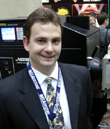|
|
 
|
|
Author
|
Topic: Xetron Maxi-12XPC not shutting down properly
|
Ken Lackner
Phenomenal Film Handler

Posts: 1907
From: Atlanta, GA, USA
Registered: Sep 2001
|
 posted 04-12-2004 12:30 PM
posted 04-12-2004 12:30 PM




Upon reading a show end cue, our automation is supposed to perform the following: close the changeover, switch the sound to non-sync, raise the house lights to full bright, and return the lens and masking to flat if applicable. On the machine in question, all of that occurs except for closing the changeover, and when the failsafe drops, the alarm sounds. The problem occurs with multiple prints, and I have tried placing the cues on every other frameline (although I doubt that would be the problem since some of the shutdown functions occur, which indicates that the cue is being read.) I have checked the cue matrix to make sure it is programmed correctly, and it is. I have also tried replacing the show end diode jumper. The problem still occurs. I'm out of ideas at this point. Suggestions?
| IP: Logged
|
|
|
|
John Walsh
Film God

Posts: 2490
From: Connecticut, USA, Earth, Milky Way
Registered: Oct 1999
|
 posted 04-12-2004 10:13 PM
posted 04-12-2004 10:13 PM




Unfortunately, I think you may have a 'real' problem with the automation. The Maxi12XPC does not use a cam timer, it has mostly digital logic (CMOS) stuff; flip-flops, AND, OR, etc. Caps are connected onto things to wave-shape the signals, which is OK if it's not overdone.
If you are pressed for cash, I can make some guesses, meaning we would just swap stuff out. But that could still take a long time and you would have to buy the chips. Again, I'm guessing, but the problem is most likely on the logic board, which is the one on the left when you swing the front panel down. There's a connector between the two boards; you might try reseating it, or reseating the IC's; you might get luckly.

Most of the IC's on the board are in sockets, which will help, but I suggest you arrange for a repair/exchange. The board will come out fairly easily. You are right in that the problem is not the cue detector since that part seems to be working correctly.
| IP: Logged
|
|
|
|
|
|
|
|
|
|
|
|
|
|
Ken Lackner
Phenomenal Film Handler

Posts: 1907
From: Atlanta, GA, USA
Registered: Sep 2001
|
 posted 04-16-2004 12:55 PM
posted 04-16-2004 12:55 PM




Well, I tried swapping the 1-34 automation logic board and the 1-32 cue logic board. The problem still occured after each swap. Guess I'll have to try the 1-19 board. That's the large board that the other two boards plug into, and which also contains the cue matrix, right? That looks like that's gonna be a bitch to swap out. Before I go doing that, is there anything else that could be causing this problem?
Actually I have a feeling it probablly is that board. I examined it closely to see if I can find anything wrong with it, and it appears that two of the traces somehow have a short across them. Whish I had a camera so I could post a pic.
I also noticed something else very strange on that board. One of the diodes above the cue matrix (I think it was D33) looked like it had one of its leads severed. Very strange. After noticing that, I looked at D33 on another unit, and it was the same way, yet the other unit works fine. Anyone know what the purpose of that diode is, and why it might have been cut like that?
BTW, yes it was in RUN mode like I thought. John, I think that the alarm would go off in Intermission mode becuase the failsafe is not supposed to drop in that mode. That's why Tom was asking me that. But you are right that the c/o should close in both modes.
One more question: Are the manual switches completely separate from the relays? I completely removed the c/o close relay and was still able to close the c/o with the manual switch. How does that work?
| IP: Logged
|
|
John Walsh
Film God

Posts: 2490
From: Connecticut, USA, Earth, Milky Way
Registered: Oct 1999
|
 posted 04-16-2004 02:10 PM
posted 04-16-2004 02:10 PM




Interesting... let us know what happens after swapping the 1-19 board. It should be easy to swap them; everything has plugs. Watch out for those white nylon spacers.
The 1-19 board has a few different revisions, so exactly what D33 does and where it's located may be different depending on when yours were made. We have "REV.D" (written next to S7.) On ours, D33 is located on the right side of the board (as you view it installed) next to P2/P3. D33 is part of a diode blocking circuit. If this diode is cut, the automation will not pulse the non-sync relay to put the sound processor in to non-sync. It uses the same signal that's used to close the c/o shutter. But remember, there are other ways to make the processor go to non-sync. It is unlikely that the factory would cut it, and if others are also cut, I would think that whoever installed the equipment did it.
So, I like to suggest you be a bit careful here. The orginal installer may have cut it for a reason. Connecting it back might be bad. Also, D33 may have a different function in your automation depending on the board revison.
The c/o switch contacts and the c/o close contacts are connected in parallel, so the whether the relay is installed or not doesn't matter. This is good because if the automation has no power, or the relay went bad, the manual switch still works. They are not completely seperate though, because if the c/o relay were to get stuck in the "close" position, the manual switch couldn't fix it. That's a pretty rare condition, though.
| IP: Logged
|
|
|
|
All times are Central (GMT -6:00)
|
|
Powered by Infopop Corporation
UBB.classicTM
6.3.1.2
The Film-Tech Forums are designed for various members related to the cinema industry to express their opinions, viewpoints and testimonials on various products, services and events based upon speculation, personal knowledge and factual information through use, therefore all views represented here allow no liability upon the publishers of this web site and the owners of said views assume no liability for any ill will resulting from these postings. The posts made here are for educational as well as entertainment purposes and as such anyone viewing this portion of the website must accept these views as statements of the author of that opinion
and agrees to release the authors from any and all liability.
|

 Home
Home
 Products
Products
 Store
Store
 Forum
Forum
 Warehouse
Warehouse
 Contact Us
Contact Us




 Printer-friendly view of this topic
Printer-friendly view of this topic













